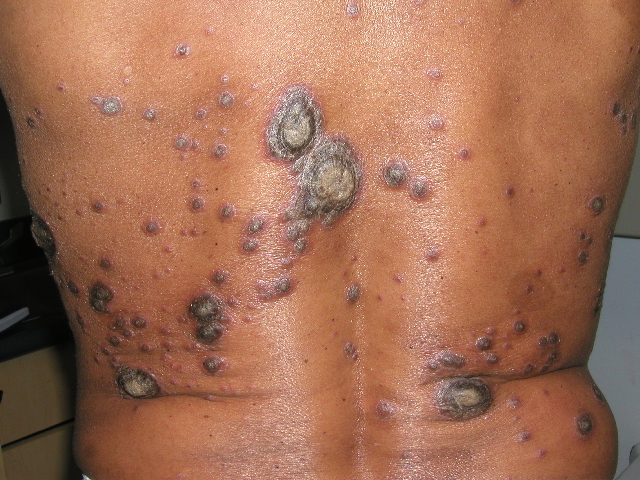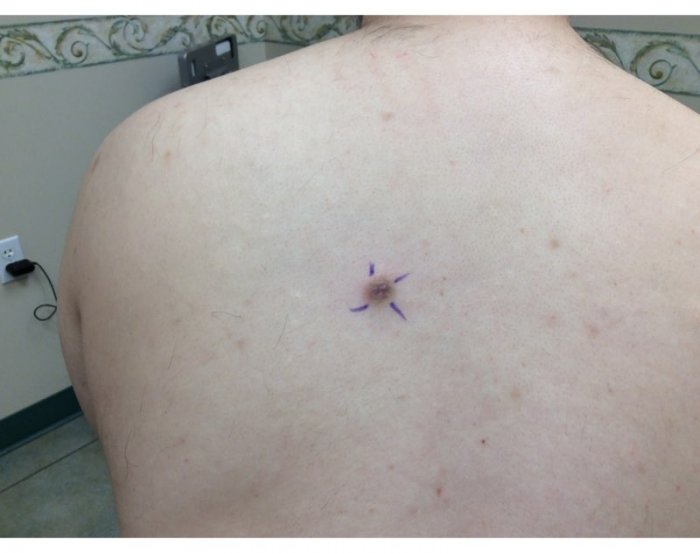Presenter: JoAnne M. LaRow. D.O.
Dermatology Program: Northeast Regional Medical Center/KCOM
Program Director: Lloyd J Cleaver, D.O.
Submitted on: December 15, 2005
CHIEF COMPLAINT: Skin irritation of arms, face, ears, and legs of two weeks duration
CLINICAL HISTORY: Patient presented to our clinic for skin irritation first noted on her face that gets itchy when she is overheated. She also endorsed arthralgias and fatigue. Patient is post=partum 15 weeks and delivered twin girls via c-section 2/7/03. Her pregnancy was complicated by hypertension in the third trimester. After delivery, she was started on Lisinopril 20 mg QD (started April 2003). She initially saw her primary care provider for the facial eruption and was started on erythromycin 333mg orally three times a day for ten days. The patient completed this treatment four days prior to presentation to our office and was also applying triamcinolone 0.1# cream two to three times a day. She has noted progressive spreading to her arms, ears, and legs.
PHYSICAL EXAM:
Erythematous, irregularly defined plaques on malar cheeks bilaterally, as well as on her left upper lateral arm, and right knee. Petechiae of the hard palate


LABORATORY TESTS:
ANA pattern: speckled; titer: 1:160
Antihistone Antibodies: negative
FANA: positive; 1:1280; homogeneous pattern
ENA w/o R?Nase: positive (1:256)
ENA w R’Nase: positive (1:128)
Ds DNA: positive (1:160)
Total protein urine 24hr: 2630.0 mg/dl
Total protein urine spot: 263 mg/dl
Cutaneous Direct Immunofluorescent:
IgG: diffuse granular deposits basement membrane
IgM: patchy faint granular deposits basement membrane and few globular deposits present
IgA: few cytoids (globular deposits) present
C3: diffuse granular deposits basesment membrane
CBC and ESR, and Complete metabolic profile: all within normal limits
DERMATOHISTOPATHOLOGY:
Nonspecific chronic dermatitis- superficial and deep with a perivascular pattern.
DIFFERENTIAL DIAGNOSIS:
1. SLE
2. Drug induced SLE
3. Discoid lupus
4. Granuloma Annulare
5. Drug eruption




